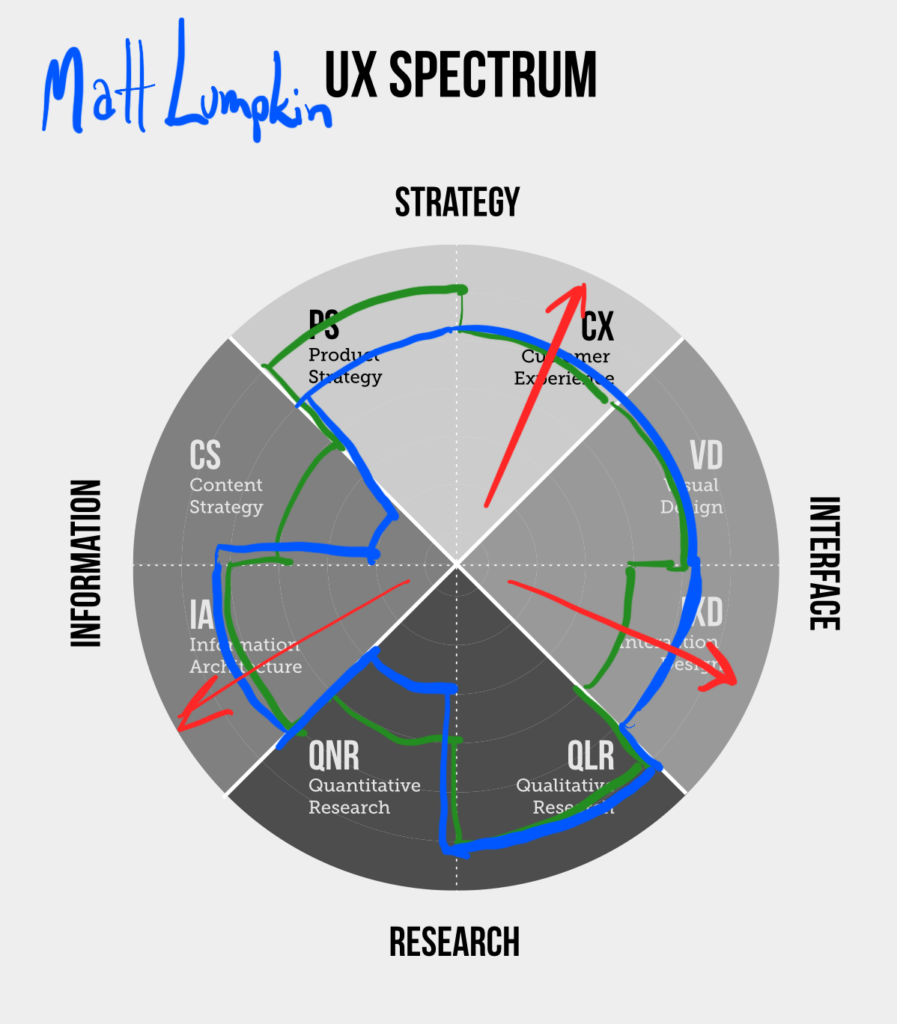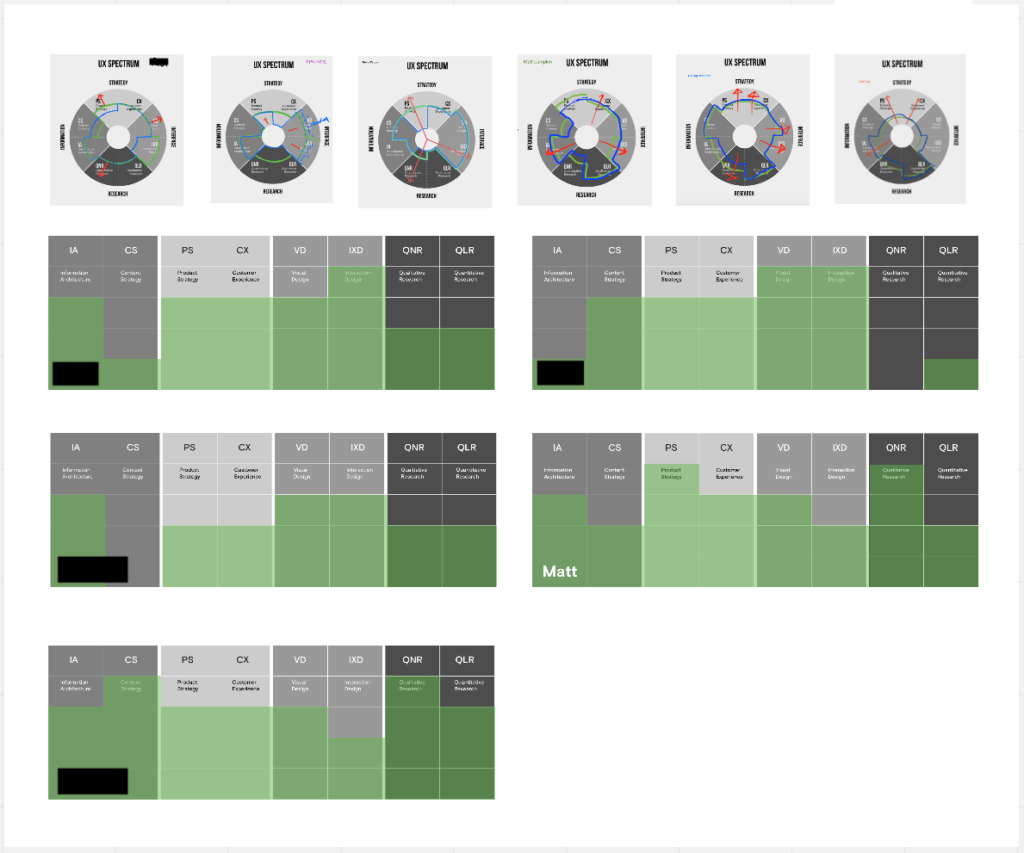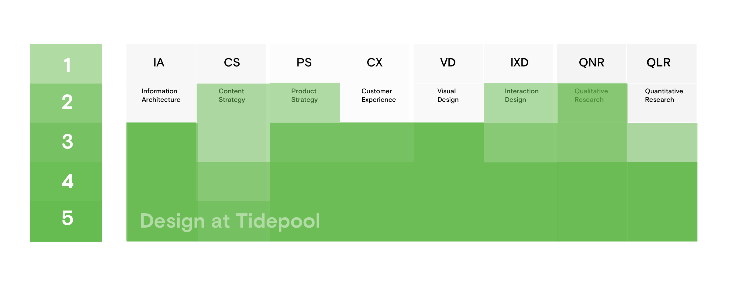Using Design Tactics to Understand Design Teams

As a new team member, I used a simple mapping exercise to shed light on the breadth of design skill across multiple roles, where skills were being underutilized, and from whom we could learn.
Upon joining the team at Tidepool, I noticed that we had several team members engaged in aspects of Design practice, some with “Designer” in the job title and some without. This is more common than you might think. Design practice is vast and covers a wide variety of disciplines. The path one took to arrive at their career as a designer often shapes which elements of design they are more familiar with.
After meeting each of them and hearing about the roles they play on the team and the kind of work they do I noticed something: all were contributing significantly to the org but they each had skills going un-used in their current scope of work. This is also common as it is very easy to get stuck in the initial work one was invited to join a company to do. However, in design as in many other specialized domains, it’s always half our job to explain the best way to make use of our skills and abilities.

First, I invited each team member to complete a short self-assessment of a simple 8 axis matrix of UX design skills (hat tip to Jason Metut’s great write-up and simple matrix; even NN/g was inspired).
I asked them to rank their skills from 1-5 in green.
Then I asked them to draw the shape of which skills they were being asked to use in their role current role as they understand it in blue.
And finally, I asked them to add arrows in red on the areas they are most interested in learning and growing.
With this info in hand, I then pulled all these results, my own included into Sketch and started overlaying them. I wanted to see the shape of our respective skills when combined as a team and to identify any missing elements.

Finally I invited the team to a meeting where we looked over the results together and talked about our backgrounds and experiences with the different elements of UX design. The good news is that we were a pretty balanced team. Though we were stronger in Qualitative research than Quantitative, our strong collaboration with Tidepool’s data science team more than made up for that.
Outcomes
This exercise accomplished three things:
- Skill Discovery: It enabled me to make clear to the leadership that we had skills on the team that were being under-utilized. This opened up the possibility of new and different assignments for team members who had been a bit stuck in more narrow roles.
- Team Trust: It made clear to the team members who was strong in which areas and likely to be able to provide help, coaching and mentorship. This became especially important as we added interns and additional designers. It also allowed us each to start relying on one another in our respective areas of competence with more confidence.
- Expanding Awareness of UX Practice: It served as the starting place for a more nuanced conversation about what it means to be a designer in a tech company among the broader team. I asked each new designer to complete the exercise so we could see how their skills would change the shape of the team. This changed how the broader team made use of designers and transformed our hiring conversations.
